We’d like to remind Forumites to please avoid political debate on the Forum.
This is to keep it a safe and useful space for MoneySaving discussions. Threads that are – or become – political in nature may be removed in line with the Forum’s rules. Thank you for your understanding.
The MSE Forum Team would like to wish you all a Merry Christmas. However, we know this time of year can be difficult for some. If you're struggling during the festive period, here's a list of organisations that might be able to help
📨 Have you signed up to the Forum's new Email Digest yet? Get a selection of trending threads sent straight to your inbox daily, weekly or monthly!
Has MSE helped you to save or reclaim money this year? Share your 2025 MoneySaving success stories!
Damp wall and rotten joists
graeme16
Posts: 23 Forumite




Purchased a 3 bed semi last week and have found some rather significant damp problems on the ground floor. There is what appears to be damp 'rising' up the external / internal wall between the lounge / kitchen and the floors where springy. I have pulled up two floorboards to find the ends of all the joists as they sit in the sockets to be rotten. it's obvious that I will need to replace the joists however I'm interested in peoples opinions on what the potential causes are. I am in touch with some damp 'specialist's' int he interim. I cannot see an obvious DPC and I believe the house was built in the 1930's. Air bricks are all clear and the decking at the back of the house was stood off the wall. I have noticed the ground level is at the same height, if not a little higher than the internal floor area and as I have pulled the gravel back, the bricks behind are obviously wet. Seems as though this is the likely culprit? I plan to pull all the gravel away from the house this morning and maybe understand more about where the current DPC is. Would this mean the cavity has to be bridged if the damp is soaking into the internal walls?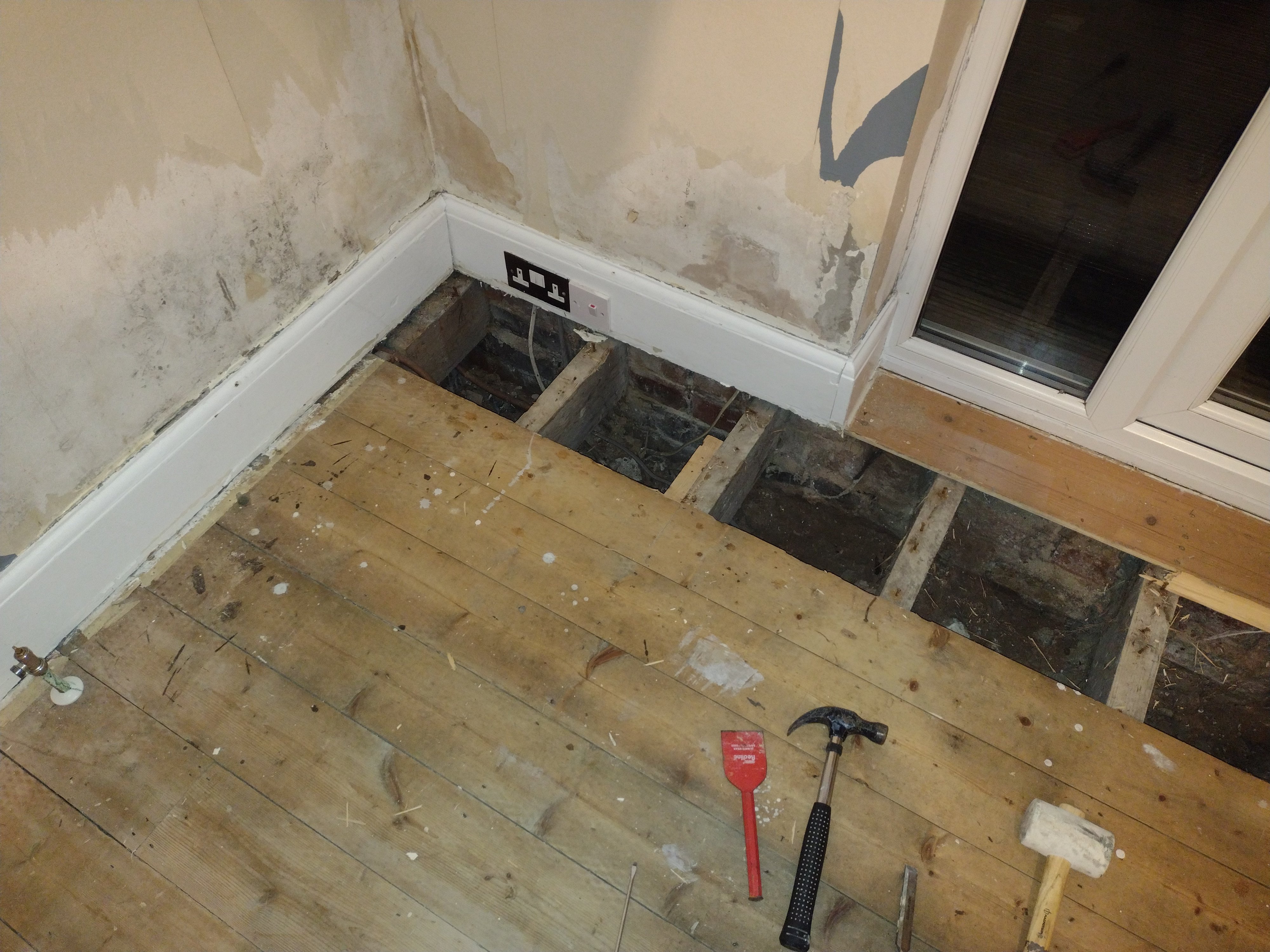
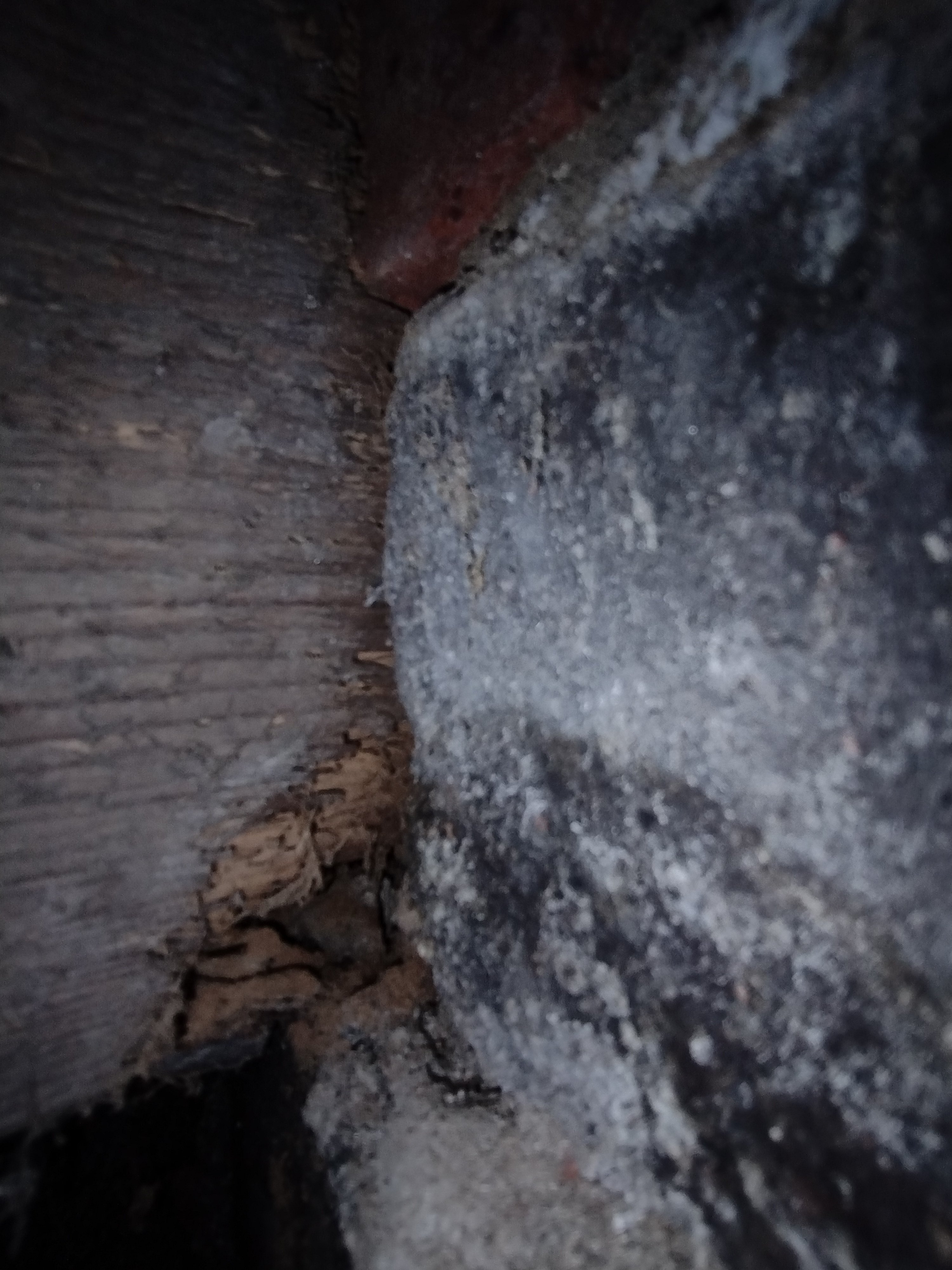
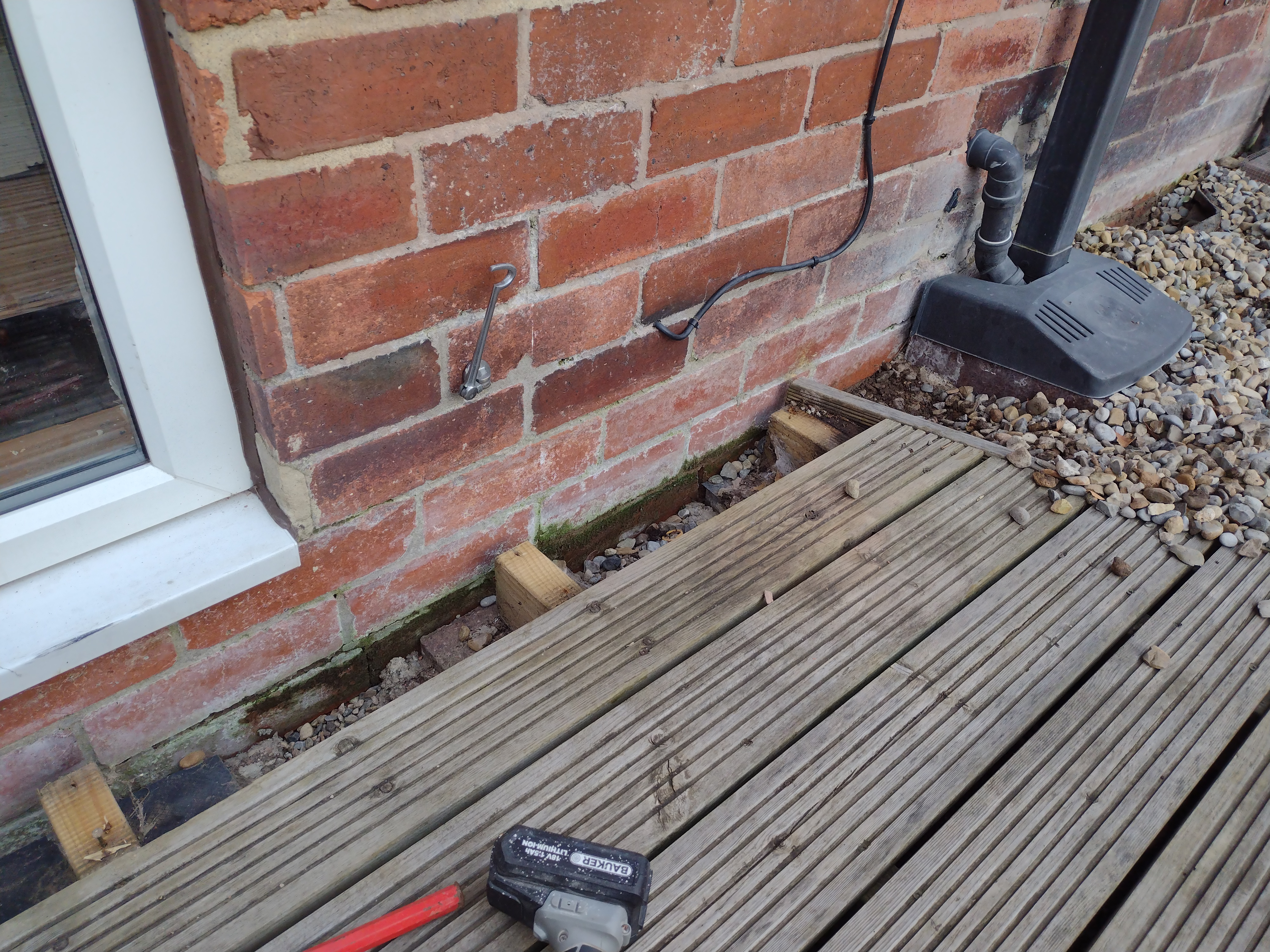
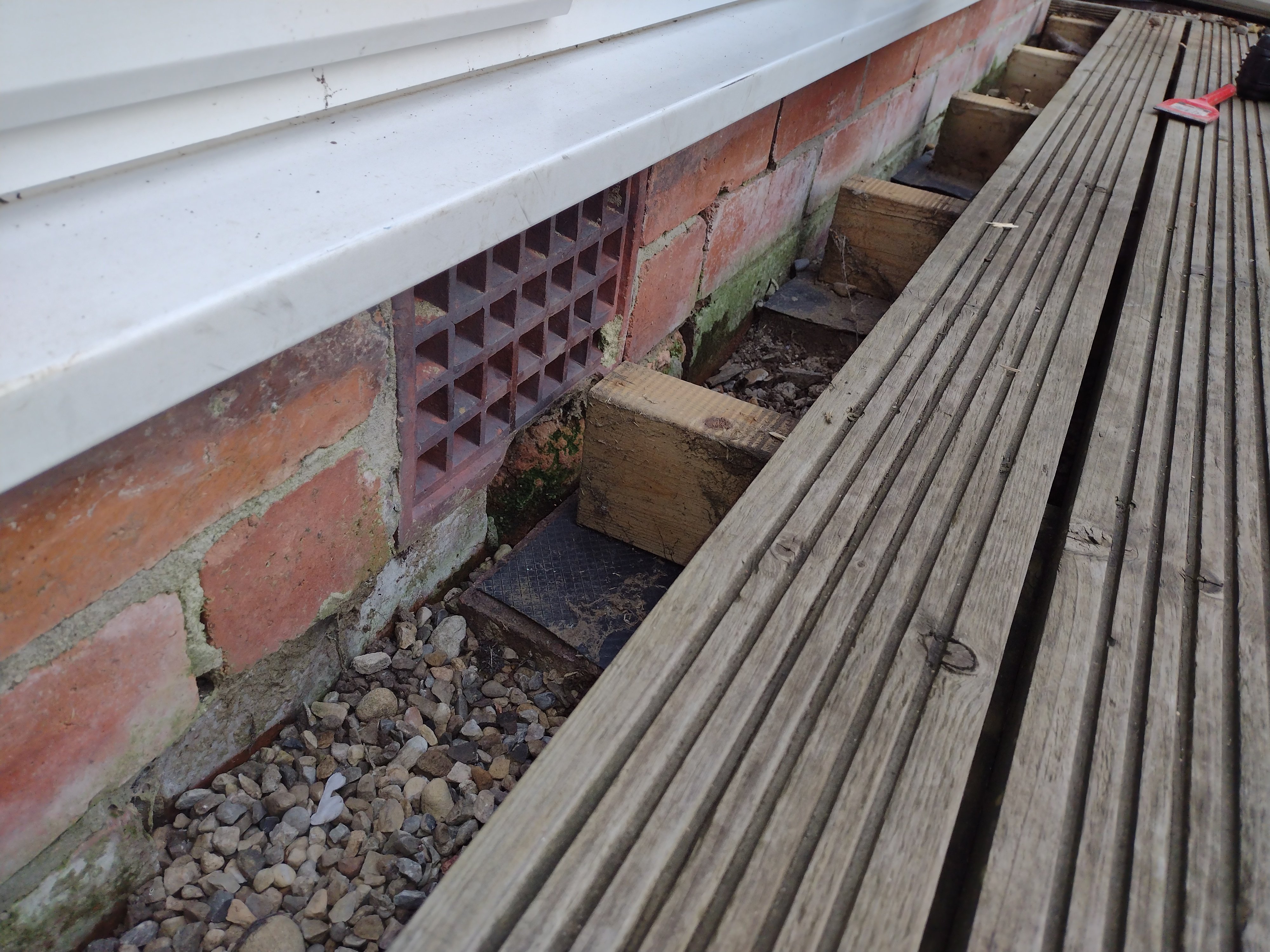




0
Comments
-
The cavities could be blocked up above the DPC. You have to remove a few bricks.0
-
In image No.3, you have a row of obviously damp bricks, yet the ones just above appear to be bone dry. This suggests that you have a DPC and it is doing its job. Ideally, the ground level should be ~150mm blow the DPC, but on a 1930s house, that may well expose the footings. 75mm below the DPC and some gravel would be a reasonable compromise.If (when) these damp "specialists" return, do not be suckered in to spending money on injected chemical DPCs or the waterproof render/plaster treatments they usually recommend - Neither are effective long term cures (they just mask the problem for a few years). And if they recommend the schrijver system, give the guy a kick up the backside as he leaves.
Any language construct that forces such insanity in this case should be abandoned without regrets. –
Erik Aronesty, 2014
Treasure the moments that you have. Savour them for as long as you can for they will never come back again.0 -
looks like the joists are sitting on top of the damp course level, when you replace them make sure there there is some there to stop bridging. Also look to lower the ground level a bit. Finally that drain looks close to the damp area, make sure its not its not leaking in against the wall0
-
Appreciate the responses. I have moved all the gravel away and think the ground is just way to high. I'll probably remove some more and wait whilst the bricks dry out. Hopefully understand more where the DPC is then however it makes sense on the location stated above.
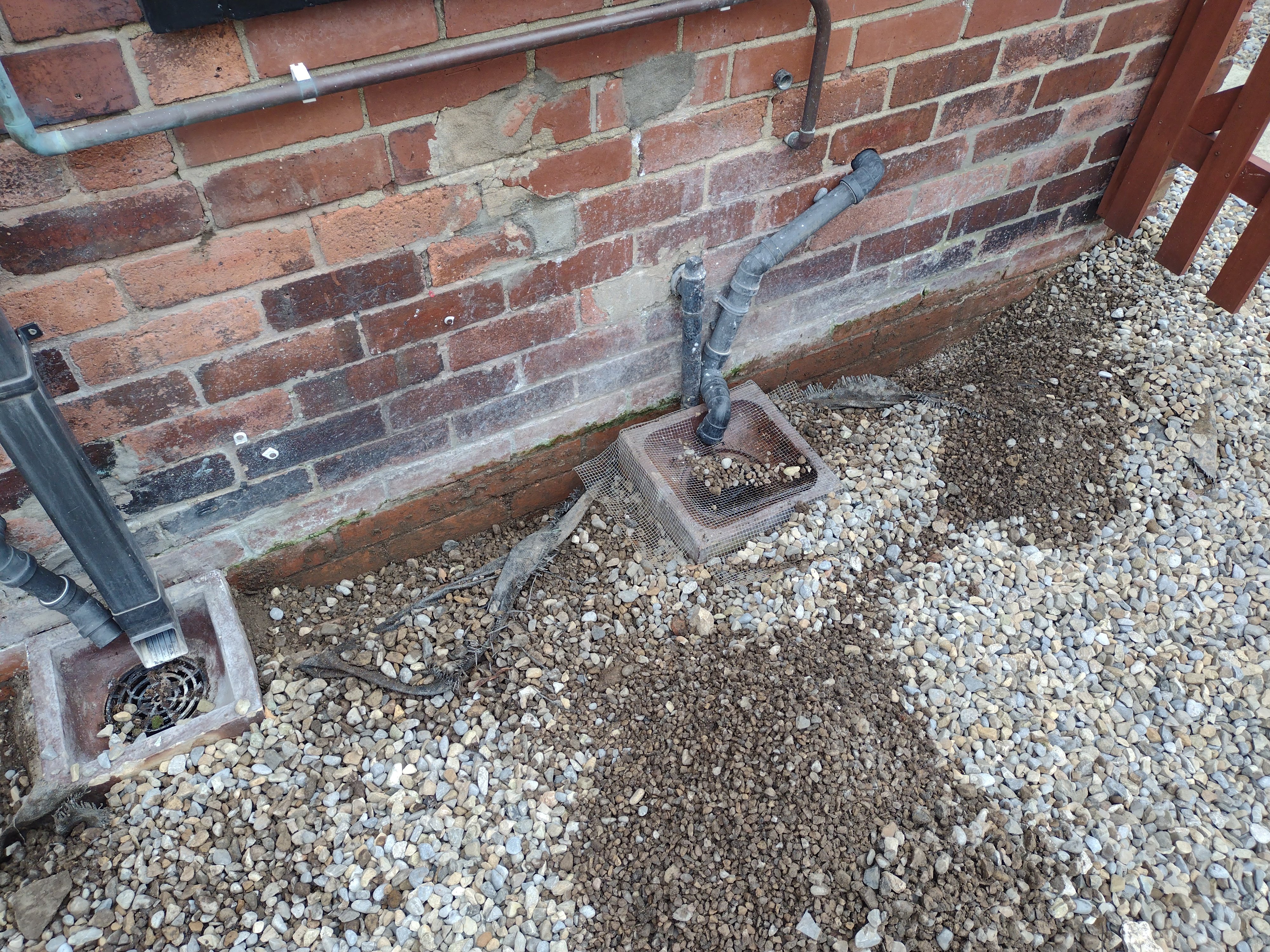
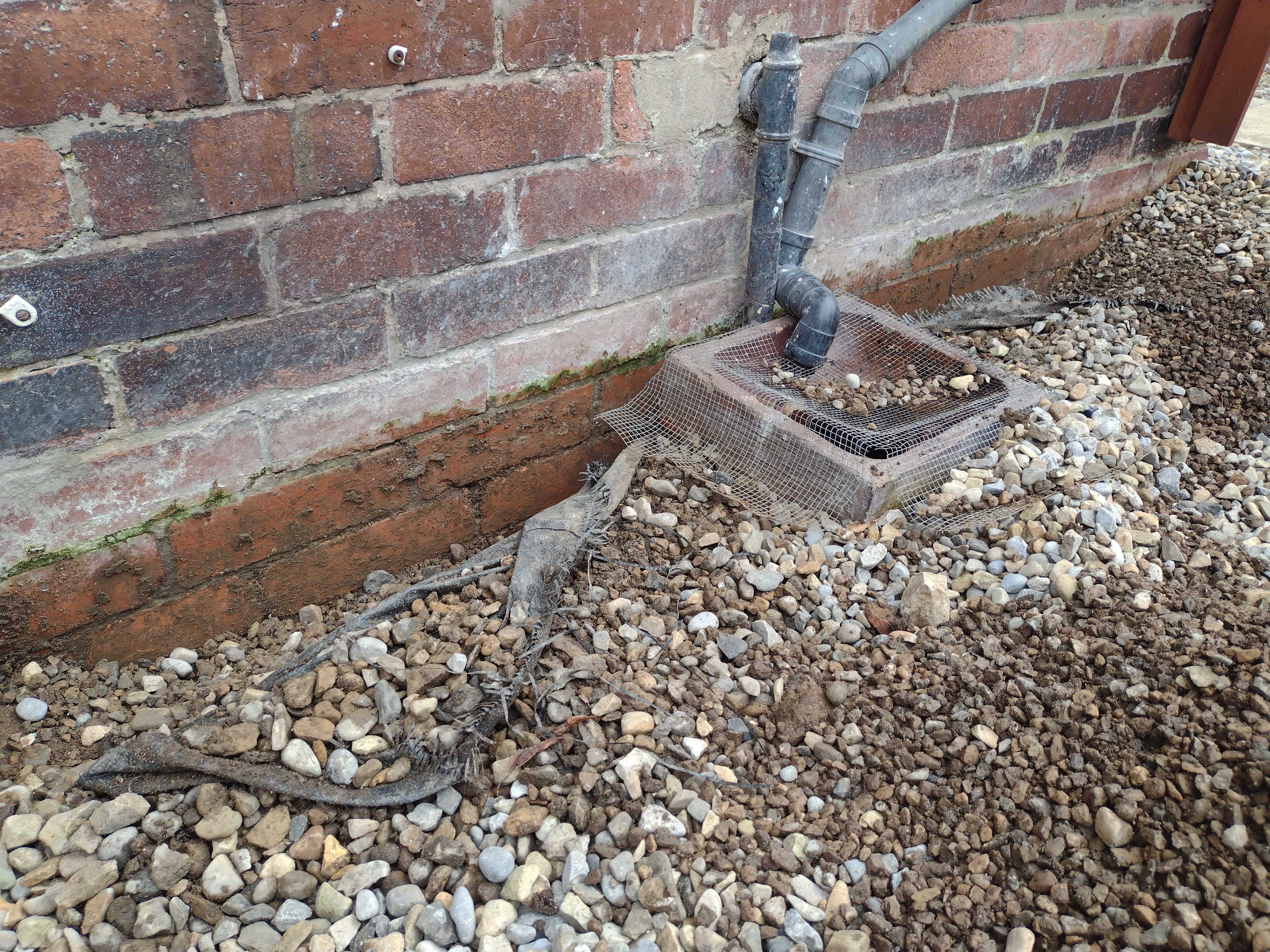
0 -
Building regs allow 2 courses of engineering bricks in a strong mortar as a DPC, so you can't always find a normal one in the joints. It would normally be under the door frame.0
-
Doesn't the presence of the air vent immediately under the door cill suggest the DPC is just above this? In which case, the level the gravel was at wasn't really too excessive - ie, the gravel and ground wasn't actually BREACHING the DPC, but just not at the min recommended level below it, 150mm.
Graeme, I suspect - but obviously don't know - that there's summat else amiss. Damp is either rising up past where the DPC should be (IE the DPC is damaged), or is coming through from outside, which would suggest that perhaps the cavity is breached by debris or something, or there is a particularly bad source of water there, a drain or pipe, something like that.
Now you have the boards up, it should be possible to investigate. Is this something you hope to fix yourself, or are you going to get someone in?
For the former, I think what I would do is expose the damaged joists back to a stage where there is zero rot, and then the recommended amount past this (look it up!). Then build a temp support for the joists - a stack of bricks or similar - and cut off all the affected ends. Once you've pulled these ends out from the supporting cavity wall, it should hopefully become clear where the damp is coming from - either from below, or from outside.0 -
You also have the drains there - worth checking that out and that the water is going down them and away.
But a banker, engaged at enormous expense,Had the whole of their cash in his care.
Lewis Carroll0 -
Bendy_House said: Doesn't the presence of the air vent immediately under the door cill suggest the DPC is just above this? In which case, the level the gravel was at wasn't really too excessive - ie, the gravel and ground wasn't actually BREACHING the DPC, but just not at the min recommended level below it, 150mm.If you look at the bricks that are obviously damp and covered in algae, they are two courses down from the bottom of the door - The air brick (I suspect) is sitting on the DPC.Sometimes the DPC is above an air brick, sometimes below. There are no hard and fast rules as to where it might be thanks in part to evolving building standards.
Any language construct that forces such insanity in this case should be abandoned without regrets. –
Erik Aronesty, 2014
Treasure the moments that you have. Savour them for as long as you can for they will never come back again.1 -
A good starting point when looking for a DPC is directly under the door frame. A standard method of construction is the engineer etc to set timber pegs in the corners at DPC level. The brickwork is then built up close to this level, then the bricklayer uses his club hammer to fine tune the peg to his corner.
The door frames were then set on top of the laid out DPC ideally all the heads at the same level.1 -
Appreciate all the information. I have a builder friend coming around today so hopefully can shed some light the DPC height. I will try and sketch the layers out.1
Confirm your email address to Create Threads and Reply

Categories
- All Categories
- 352.9K Banking & Borrowing
- 253.9K Reduce Debt & Boost Income
- 454.7K Spending & Discounts
- 246K Work, Benefits & Business
- 602.1K Mortgages, Homes & Bills
- 177.8K Life & Family
- 259.9K Travel & Transport
- 1.5M Hobbies & Leisure
- 16K Discuss & Feedback
- 37.7K Read-Only Boards




